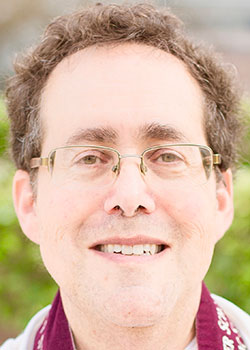Every living thing exhibits a balance between alteration and continuity. A single cell, for example, takes in new substances (food, air, water) and remolds those building blocks to fashion its own form. At the same time that its constituents change, its shape remains the same. Persistence and change, it seems, are simply different phases of the same phenomenon, different faces of the same reality. One cannot successfully remain and thrive without an openness to change, and one cannot retain the energy and will to change without a commitment to something timeless and constant.
That same dynamic tension has characterized Judaism from its inception, allowing it to speak across the generations with a vibrant voice, allowing the ever-renewed energy and depth of Torah to reverberate throughout the ages.
Today's Torah portion hints at this remarkable capacity for renewal and regeneration. In describing the sacrifices to be brought to God, Sefer Va-Yikra (the Book of Leviticus) informs us "the Priest shall turn these [sacrifices] into smoke on the altar as food, an offering by fire to the LORD." Traditional commentators have noted the odd choice of words the Torah uses to describe the sacrifices: lehem isheh l'Adonai, literally "bread of fire for God." Why does God need bread? Why are we told to offer a sacrifice to God in the first place? Is it really possible that God needs food?
This use of lehem, bread, to denote sacrifices is not unique to our parashah - elsewhere in the Books of Leviticus and Numbers the Torah reflects the same archaic Hebrew, reflecting a conception that the Torah had already transcended. Rashi points out that lehem "denotes food" and Rabbi Abraham ibn Ezra reminds us, "I have already explained that the word "bread" is often used in Hebrew to denote food in general. It can refer to fruit as well as to flesh."
This traditional understanding of "lehem" not as bread alone, but as all types of food is confirmed by modern scholarship as well. The authoritative Rabbi Jacob Milgrom writes, "In the Semitic languages lehem refers to the food of the country. In Arabic it means "flesh"; in seashore areas it can mean "fish". In his commentary on the Book of Leviticus, Baruch Levine writes that the "Hebrew lehem not only means "bread" but is a more general word for food."
Why does the Torah describe the sacrifices to God as food? Could it be that God eats, that God needs nutrition? Does God keep kosher?
Rabbi Milgrom reminds us that this archaic language, of God's food, "harkens back to earliest times, when sacrifices were intended to feed the gods. But scripture rejects this notion, and in the cultic texts this term can be characterized as a linguistic fossil." Professor Levine concurs, "In most ancient societies, it was believed that gods required food for their sustenance and relied on sacrifices for energy and strength. The Torah codes, while reserving the idiom common to ancient religions, understand the process somewhat differently. God desires the sacrifices of worshipers not because He requires sustenance, but because He desires their devotion and their fellowship."
The Torah could have developed a completely new terminology to characterize the sacrifices offered in the Mishkan and later on in King Solomon's Temple. Instead, it used the languages of earlier and surrounding pagan religions, both to work from within the assumptions of its listeners and to elevate that worldview to a higher plane. Rather than breaking with the past in the form of its worship, Judaism employed those forms to educate its followers to a truer understanding of God and God's desires.
Contrary to popular assumption, Judaism isn't so much changing forms bearing timeless truths as it is timeless forms that allow for new interpretations. We deliberately go out of our way to reinterpret ancient ritual precisely to maintain the venerable quality so apparent in Judaism's sacred moments. Even when we can no longer share the original understanding of a particular ritual (breaking the glass under the huppah to scare away demons seeking the young groom's seed) we refuse to abandon the mitzvah, instead giving it an interpretation that allows us to retain it and to pass it on to the next generation without modification.
Throughout the ages, Jews have retained faithful loyalty to the mitzvot and minhagim, the commandments and customs that make Judaism distinctive, awesome, beautiful, and effective. And in each age, sages and scholars haven't hesitated to provide new insights and readings that have allowed each new generation to reclaim those practices as their own, still reverberating with God's holy voice.
The continuity of Judaism lies in its forms; rich and fertile symbols capable of bearing a rainbow of meanings across time. With each new Midrash, each new reading, our Sages teach, we harvest the Torah anew. And that process of Midrash is to be found in the Torah itself.
Shabbat Shalom!

